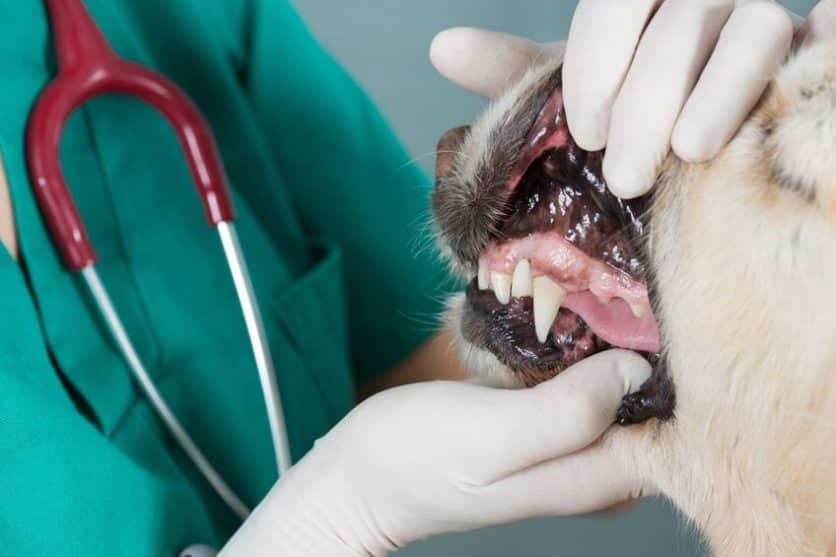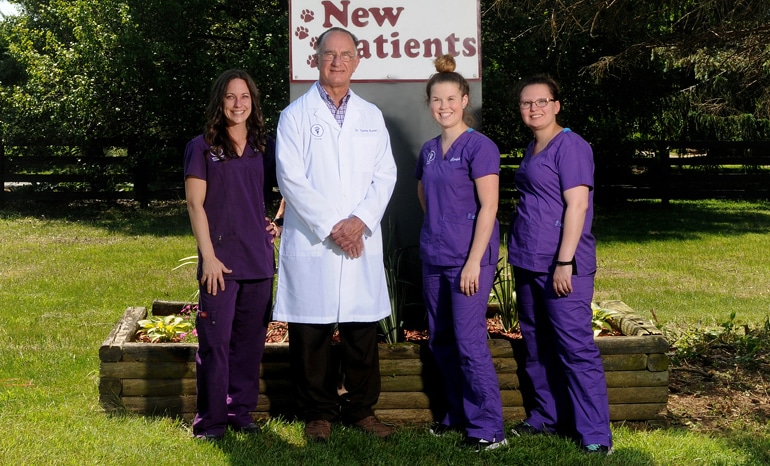Dr Rainey & staff were just fantastic with my 2 Beagles on our 1st visit there. An informative & caring team & their rates are reasonable. I highly... recommended Countryside for all one's veterinary needs.read more
We just moved to the area and hadn't established care with a vet yet. My English Bulldog had an urgent need to be seen and I brought her in to... Countryside Animal Hospital. Dr. Rainey was quick to assess that she needed emergent care at a vet hospital and recommended the best facility that could meet her needs quickly. Once released I took her back to help manage the chronic condition she was diagnosed with and couldn't be happier with his expertise! She is now doing well and his recommendations solved an issue that we didn't realize she had for years. I highly recommend Countryside Animal Hospital!read more
They are absolutely wonderful here! I used to go to Lagrange Animal Hospital and they were SO rude- especially the main lady veterinarian, just... unnecessarily nasty, and their prices just kept going up for basic services. The pet rewards points system at Countryside is super helpful- I have only been coming here about a year and have had several free services (grooming, anal gland expression, etc.) using my points. The ladies here are very nice and Dr. Rainey is kind, easygoing, and knowledgeable. I 100% recommend this veterinary clinic! They are like a hidden gem.read more
Dr Rainey and his staff are always courteous and welcoming. Dr Rainey always takes the time to explain the processes when caring for our animals. We... use countryside for pet healthcare, baths, boarding, and teeth cleaning. They are great with all of our dogs!!read more
We are so thankful to Dr. Rainey and the care his giving to our baby Jasper. We found out he had kidney failure and Dr. Rainey is doing everything so... we can keep him around a little bit longer. He and his team are wonderful and really care about our fur babies! We are thankful for the care he's given both our boys Mr. Lu and Jasper!read more
Our Lab was in such bad shape from allergies that we thought we were going to lose him. Dr. Rainey was wonderful and gave us practical advice to get... his allergies under control. Since then Countryside has worked with us to make sure he is in optimal health, including getting his weight down. Everyone there has been so kind. Countryside really knows animals and their prices are reasonable.read more
Dr. Rainey is a gift to animals and the people who are their companions. One of the last of the non-corporate veterinarians, his knowledge and... empathy determine he is one of the best we have worked with as stray/feral cat collectors in our neighborhood.It is a long drive for us to take our cats, but we will gladly make it for his care. His staff are friendly and accommodating, always finding a way to fit us in on short notice.We are blessed to have Dr Rainey and Countryside as our cats healthcare provider.Lem and Maura Masonread more
These guys are by far the best vet I have been to in my 30 years of having pets… they are EXTREMELY accommodating, and very reasonably priced… I... would DEFINITELY recommend them to anyone looking for a vet!!!read more
My kitten Martica is my emotional support cat and is very dear to me. He is 11mo. Old. Country side animal hospital has taken care of him for me all... his lil life. Very specific though he has been treated on 2 seperate occasion for illnesses once for a double severe ear infection..Dr. Rainey aka The Magic Man had him feeling better and healed in no time flat and helped us eliminate his allergen. Also more serious he was also treated for aspirations pneumonia w complications from meditation he recieved at blue pearl hospital after hours treatment Dr.Rainey kept him overnight gave him fluids and ran every necessary test gave him shots he could tolerate very well fixed his diet and saved Marticas life. He also provides safe cat treats cat toothpaste and brush and his shampoo right in the office for easy convenience. Magic Man aka Dr. Rainey and his staff..ms. Candy. Ms. Sophia and everyone there are the greatest! I would NEVER take my Martica anywhere but there i learned the hard way..but Dr.Rainey saved the day as always!!read more
Great staff, who were kind, patient and skilled in working with our dog—he gets very anxious during visits to the vet. Doctor took the time to fully... explain all options for treatment and was very up front about costs for all procedures.read more
All of my pets receive excellent care at Countryside Animal Hospital. I love having a very experienced vet so I know my pets’ care is in good hands.... I also love the staff who always make me feel very welcomed when I enter with my pets. Their infectious smiles and caring natures make you feel like you are family. I highly recommend this vet for all of your pets’ care and needs!read more
I was not an established patient however they were extremely wonderful, caring and kind. They worked me in first thing in the morning. Dr. Rainey... knew exactly what to do for our little Kobe. They answered all of my follow up questions/concerns. As long as I have furbabies this is where I will be taking them. I just cannot say enough great things about them. Thank you all so much for taking such wonderful care of our mischievous little Kobe. We will see you all soon…but not too soon of course 🥰read more
Very reasonable surgical prices, kind compatonate staff. Truly cares about my senior dogs health and wellbeing! Just moved here from out of state... this is for sure my new vet!read more
Bailey loves her new diet! It has stopped her stomach issues and she is thinner and full of life! She eats salmon, green beans and sweet potatoes!!... This makes sense now more than ever with everything I have seen with dogs sharing similar dna to humans.read more
We took our GS in for a second opinion and got more information than ever before. Dr Rainey gave us some herbal supplements along with a pain med... and it had worked wonders on our girl. She’s acting like her playful self again.read more
10/10 would recommend to other pet owners. As a local business owner in La Grange I can appreciate a reliable place where my family and I can take... our pets. Reasonable pricing for our pets needs as well.read more
We took our new Barbet puppy for his first Veterinarian visit this week, which was awesome. The staff was friendly, and Dr. Rainey shared much good... information about puppy health. It has a small-town country feel, and I love that!! I look forward to having them care for my new Barbet, Moses, for a long time. Thanks to everyone at Countryside for making us feel comfortable.read more
The staff at Countryside are so kind and take excellent care of our pets! They truly go above and beyond to make sure our pets are comfortable during... visits and help answer any questions we have.read more
Dr. Rainey has correctly diagnosed our cat, Diva, with two different conditions this year alone. He has given Diva the proper treatment and she's... responded very well. We are so fortunate that he is able to be Divas doctor, and the staff there has treated her so well. We won't go anywhere else.read more
Country Side Animal Veterinary is great. The staff is polite and efficient. The clinic is clean you have little to waiting to be seen. Everyone is... very friendly and polite. The care my Nemo received was awesome. Nemo isn't exactly easy to deal with and Dr. Rainy was great He was kind and caringread more
On vacation and my pup got bit by something, causing a lump and swelling. Office scheduled me quickly (next morning). Vet was kind and gentle with my... little girl. Gave her a shot of cortisone that helped. Office Staff was extremely friendly. Pricing was a bit higher than our usual vet, but much more reasonable than typical animal hospitals @$125. Would definitely go again for treatment if needed.read more
My dog is very anxious. The staff did well with him and our visit went better than I expected. Dr. Rainey and the rest of the staff are very kind and... take the time to listen to any concerns.read more
Was able to get in the same day for an appointment! Staff is pleasant and friendly. Dr. Rainey took the time to explain my dog’s condition. He... answered all my questions and concerns. Would definitely recommend this veterinary clinic!read more
Dr. Rainey and his staff are always so nice and sweet. Very caring and they treat my fur babies like there own. Highly Recommend them. You can't... find any better vet than them. I lost my Companion of 13 years (Snuggles) and they were so supportive and sent there sympathy. ❤️ I truly can't put there practice into words. Absolutely love this Place and all the Staffread more
I love my new vet and his staff!! I live in Louisville but so worth the drive!! Dr Thomas shows you what's going on face to face instead of having a... middle person (vet tech) come a tell you what the Dr said like other clinics that I've been to. He gave life back to my baby Lil Nemo and I am so grateful for him and his staff, they are amazing too!! 10 out of 10 I do recommend!!read more
Dr Rainey and staff are wonderful. My dog has had a recurrent ear infection, I have been to numerous vets and for the first time in a few years my... dog is infection free. Thank you Countryside!!!read more
Dr. Rainey saved my kitty Bandit. No other vet has been as caring, attentive or professional and I've taken him to SIX vets in town. Most wouldn't... help him, tried to put him to sleep!!I will never go anywhere else with my fur babies Dr. Rainey is literally the best vet in the greater Louisville area. I'm always in and out on time as well and the prices are very affordable, especially because he accepts Care Credit. Thank you Dr. Rainey and his nice staff. LT Dan Bandit is able to eat and have his life back thanks to you!!!!!read more







